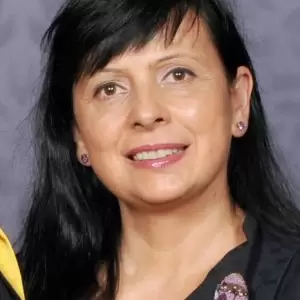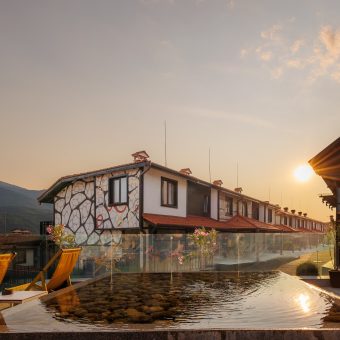A spiritual journey to the Rila Monastery
16.10.2019
In the beautiful and warm autumn days, combine a spa holiday in the Ruskovets complex with a spiritual journey to the Rila Monastery! October 19 is the feast of St. John Rilski
Complex Ruskovets – Rila Monastery – 102 km., 1 hour and 37 minutes. by car
Sofia – Rila Monastery – 127 km, 1 hour and 41 minutes by car
Plovdiv – Ruskovets Complex in Dobrinishte – Rila Monastery – 251km.
A holy place for Bulgarians and all Orthodox nations
Originated in the 9th century with the powerful spiritual power of St. Ivan Rilski, who survived the vicissitudes of history, the Rila Monastery is the guardian of Christianity and Bulgaria.
St. Ivan Rilski is the spiritual patron of the Bulgarian people and of Bulgaria. Over the centuries, his relics traveled around the Bulgarian land, giving protection and hope. On June 30, 1469 they returned to the monastery, thanks to Maria Branković, the wife of Sultan Murad II. In the years of Turkish slavery, when the Bulgarian state was destroyed, the Rila Monastery rose as a “state of the spirit”.
In its present form, the Rila Monastery began to be built in 1816. After a natural fire in 1833. it has been newly rebuilt.
What you must visit:
· The 15th century “Orlitsa” metoch. – 3 km away. from the town of Rila and 18 km. from the monastery. The church “St.St. Peter and Paul” with the frescoes of Nikola Obrazopisov is from the 19th century. Pay attention to the scene of the transfer of the relics of St. Ivan Rilski in the vestibule – the saint is one-handed. Many researchers today are looking for the path of the saint’s hand and where her holy protection is.
· The Metoch “Pchelino” with the church “St. Luka” and the church “Pokrov Bogorodichen” – 3 km away. from the monastery. It is probably here that the monastic brotherhood was initially formed at the end of the 9th century. of the 10th century. Legend has it that the church “St. Luka” was erected in memory of Luka, nephew of Ivan Rilski and a monk. During the Renaissance, the place was associated with the teaching and literary activity of the first Bulgarian secular teacher Neofit Rilski, as well as with Toma Vishanov-Mollera, the founder of the Ban Art School.
· The old post house, the Church of the Dormition of St. Ivan Rilski” and the cave of St. Ivan Rilski are 3 and a half km away from the monastery. They can be reached in 30 minutes on foot through a centuries-old beech forest. Church “Assumption of St. Ivan Rilski” was built on the foundations of an older church, in which St. Ivan Rilski, before his remains were transferred to Sredets /Sofia/. In its current form, it is from 1820. Do not miss to take a sip of water from the healing spring, which is 50 meters from the place.
In the monastery:
The Church “Nativity of the Virgin” – was built in the period from 1833. until 1836 It is a brilliant example of Bulgarian Renaissance architecture, building tradition and art. The greatest masters of their time meet here. It becomes a field for competition between the two art centers of Bansko and Samokov. The works of Zahari Zograf and Dimitar Molerov can be seen. At the altar, under the icon of Christ the Almighty, are the relics of St. Ivan Rilski
-
The old monastery is remarkable and gives an idea of the multitude of the monastic brotherhood and pilgrims
-
Hrelova Tower and All Saints Chapel
-
The church museum: relics from the old church, the deeds of donation of the Bulgarian kings, sultan’s firmans, the reliquary with the face of “St. Mother of God Osenovitsa”, the gift icon of the Mother of God by Maria Brankovich from the 15th century, Rila St. The Virgin from the 18th c.
-
The Koprivshtene room
-
The monastery bakery, where you can get amazing soft pastries
-
The Bulgarian king Boris III was buried in the monastery. Today, only the glass with his heart is placed in its place
-
Here is also the grave of the English journalist James Boucher – defender of the Bulgarians and defender of justice in relation to Bulgaria after the Balkan Wars of 1912-13.

Участвам активно в културния живот на туристическа дестинация Банско. Член съм на родолюбивото сдружение „Дедо Лазко“. Ангажиментите си към туристическия бизнес съчетавам с преподавателска работа по предметите история и философия. Част съм от авторския екип за адаптирането на „История славянобългарска“ за ученици. Фирма „Арт Идея Бг“ за дизайн, интернет порталът за кулинарен туризъм www.culinarytourism.bg и проектът „Вкусът на Банско“ развивам като напълно мои авторски пространства.





